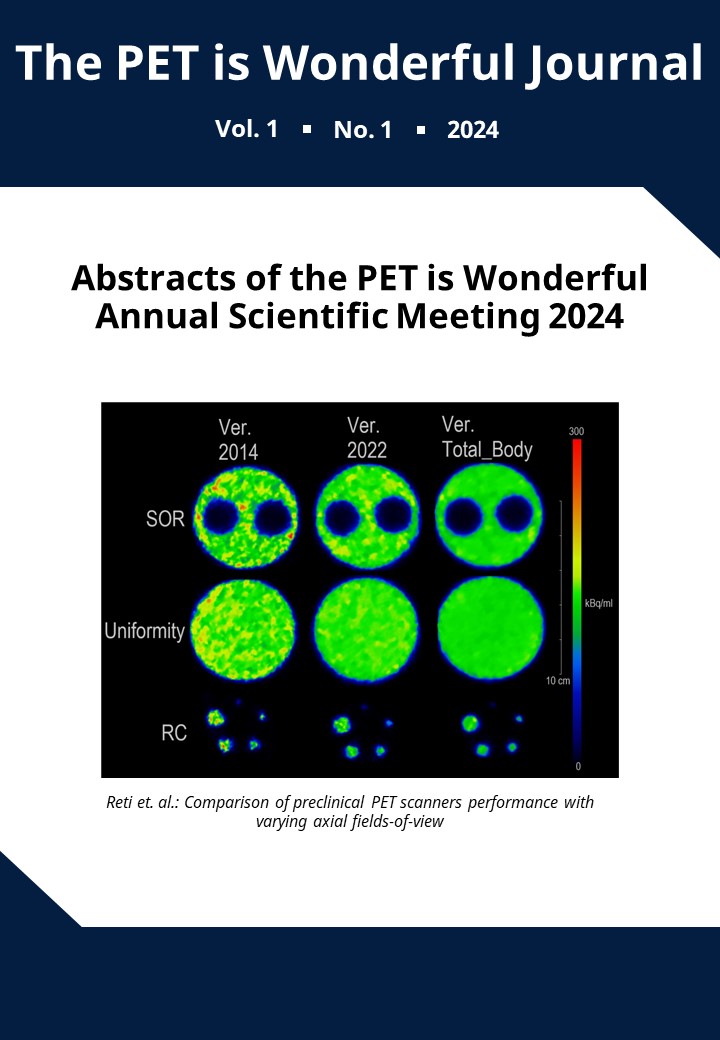Tracing proliferating potential of lung tumours by [11C]Nicotinamide
DOI:
https://doi.org/10.2218/piwjournal.9852Abstract
Many tumours rely on aerobic glycolysis, known as the Warburg effect, to satisfy energy needs and sustain rapid proliferation [1]. High demands of glucose in tumours can be measured by [18F[fluorodeoxyglucose, [18F]FDG, positron emission tomography (PET). Nicotinamide adenine dinucleotide (NAD) is a coenzyme involved in redox reactions in many metabolic pathways, including glycolysis. To maintain the high rates of glycolysis and proliferation, tumours need increased NAD+ levels and use nicotinamide for the upregulated NAD+ salvage pathway that is the main source of NAD+ in proliferative cancer cells [2]. Herein, we show an improved synthesis method of [11C]Nicotinamide, [11C]NAM, and studied the uptake of [11C]NAM and [18F]FDG to measure proliferating capacity in a lung cancer model.
[Carboxyl-11C]nicotinamide was synthesized by a one-pot radiolabeling method [3] on the SYNTHRA synthesizer (Synthra GmbH, Germany) (see Figure 1A). We used a KrasG12D/+ genetically engineered mouse model of lung cancer and evaluated the uptake of [11C]nicotinamide and [18F]FDG with dual-tracer sequential imaging protocol (see Figure 1B) using a NanoScan PET/MRI scanner (Mediso Medical Imaging Systems, Hungary).
We obtained [carboxyl-11C]nicotinamide in a radiochemical yield of 15 ± 5 %, volumic activity of 50 ± 10 MBq/ml, and radiochemical purity was > 99 %. We optimized the imaging protocol and found the uptake of [11C]nicotinamide co-localized with the uptake of [18F]FDG in the KrasG12D/+ model of lung cancer as shown in Figure 1C suggesting the higher NAM uptake was associated with high NAD+ production in highly proliferating tumours.
We demonstrated that metabolic PET/MRI imaging with [11C]NAM can complement [18F]FDG PET and be useful for probing proliferative potential in lung cancer. This method could be translated and applied in clinical practice to enable visualization of NAD+ metabolism in lung tumours and targeted therapeutically.
Please click on the 'PDF' for the full abstract!
Downloads
Published
Issue
Section
License
Copyright (c) 2024 Robert Bielik, Gavin Brown, Dmitry Solovyev, David Lewis

This work is licensed under a Creative Commons Attribution 4.0 International License.





